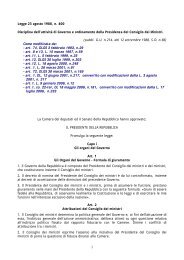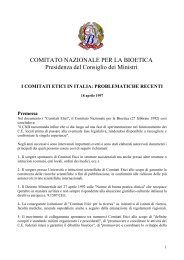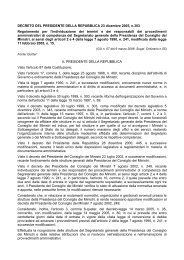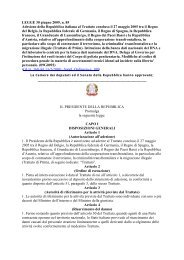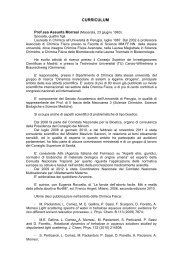President
President
President
You also want an ePaper? Increase the reach of your titles
YUMPU automatically turns print PDFs into web optimized ePapers that Google loves.
Multiple factors contribute to sexual development. The three key factors<br />
are: 1. the chromosomes of the zygote (46,XX in females; 46,XY in males); 2.<br />
the differentiation of the gonads in ovary and testis; 3. the differentiation of<br />
organs responsible for reproduction and development of external genitalia.<br />
The Y sex chromosome provides the signal for the development of the<br />
male gonad, irrespective of the number of female sex chromosomes (X<br />
chromosome) present. The absence of Y directs the development of the<br />
individual into a female. Therefore, the genetic sex, which is formed at the<br />
moment of conception in chromosomal 46,XX or 46,XY, can be considered the<br />
first event to determine the sex of a person. A series of changes follow on from<br />
this, in the cascade which leads to the formation of the female gonad (ovary) or<br />
male (testis) and therefore to the definition of the person’s gonadal sex.<br />
Gonads, in turn, secrete hormones that control the development of external<br />
genitalia (phenotypic sex). There are also other levels of expression of somatic<br />
sexuality that contribute to the difference between men/women: for example,<br />
blood-chemical parameters and basal metabolism rate.<br />
The sex of rearing (nurture) and psychic sex (gender, role) are dependent<br />
on these events.<br />
Although the formula of sex chromosomes is already defined in the<br />
zygote, sexual differentiation in the human embryo starts only after the 6 th<br />
week. Until then the gonads are identical in both sexes and both the precursors<br />
of the tubes and uterus are present, the so-called Mullerian ducts, as well as<br />
the precursors of the male efferent ducts, the so-called Wolffian ducts.<br />
Undifferentiated gonads appear as bulges in the central portion of the genital<br />
ridge. In the presence of testicular determining factor (TDF), 42 days after<br />
conception, the first signs of organisation of the testis appear. In the absence of<br />
TDF, the gonad develops into female.<br />
Understanding of the initial stages of this complex process were defined in<br />
the 40’s from animal castration experiments carried out by Jost. Following the<br />
removal of genital ridges in rabbit embryos, in the stage preceding<br />
differentiation of the gonad, it was seen that internal and external genitalia<br />
developed into female, regardless of genetic sex. When a crystal of<br />
testosterone (the male hormone produced by the testes) was inserted in place<br />
of the removed genital ridge, masculinisation of genitalia occurred even though<br />
the Mullerian ducts and therefore the uterus and tubes continued to exist. It has<br />
emerged from this result that the basic sex is female; virilisation is related to the<br />
secretion of testosterone by the testes; testosterone is not sufficient, however,<br />
to complete virilisation, the hormone that inhibits Mullerian structures (AMH) is<br />
also necessary.<br />
Jost’s intuition has been largely confirmed in the last 25 years, through a<br />
series of new acquisitions including, among other things: the identification of<br />
the SRY gene (Sex determining Region Y), the equivalent of TDF; the<br />
discovery of hormone AMH, produced by testis Sertoli cells, which inhibit<br />
Mullerian structures; evidence for the production of testosterone by Leydig cells<br />
of the testis and its reduction into Dihydrotestosterone (DHT), the hormone that<br />
produces virilisation in peripheral tissues, by the a-reductase enzyme. The<br />
effectiveness of these hormones depends on the functional integrity of the<br />
androgen receptor (AR gene) in target cells. This cascade of events is<br />
completed by the action of other genes present on non-sex chromosomes<br />
(autosomes) and on the X chromosome, whose proper functioning is critical to<br />
85







